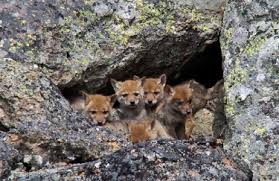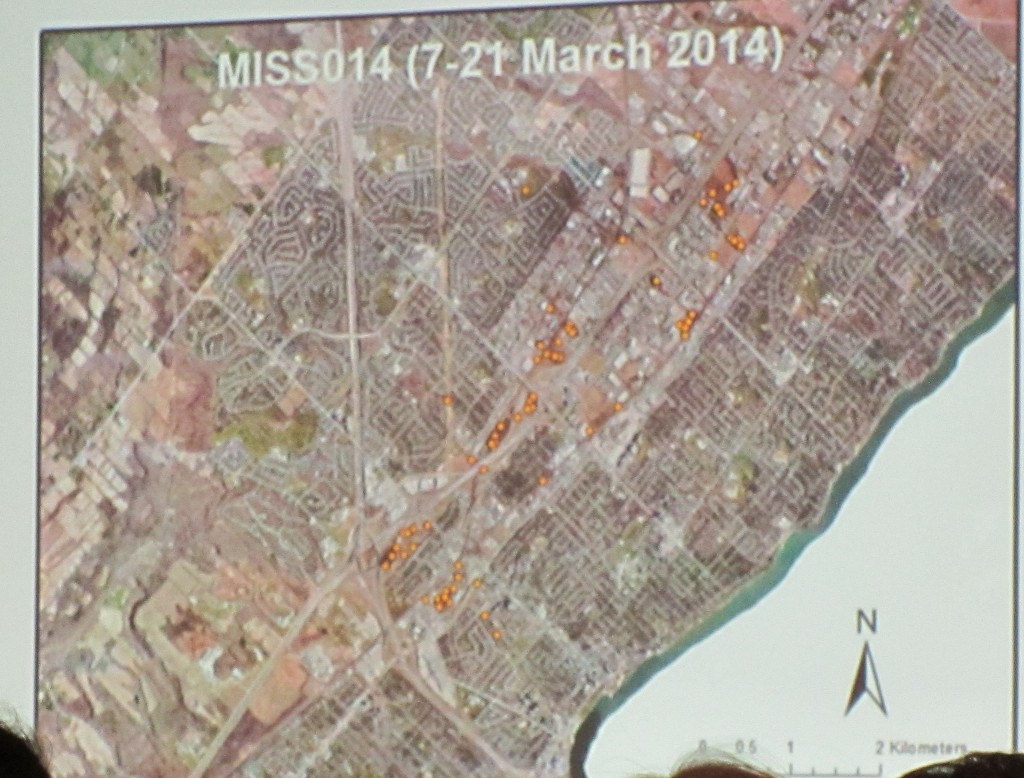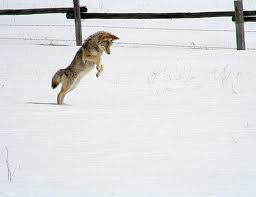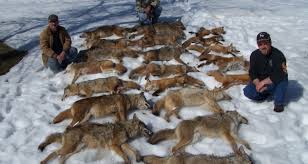March 31, 2014
BURLINGTON, ON.
There were myths to be dispelled and facts to be shared – and it would have been nice if there had been time to ask questions earlier in the evening. For some reason many civil servants feel they need to take their audiences through all the legislation that is out there to be dealt with – the people in the room at the Holy Lutheran Church on Lakeshore Road wanted to ask questions about the coyote problem Burlington is experiencing.
The audience learned that coyotes are very territorial. They tend to mate for life. They have the one gestation period each year – February. Their gestation period is 60 to 63 days and something between 20 to 50% of each litter survive.
Coyotes do not mate with dogs. They will mate with some wolves

Pups stay with the parents until they know how to hunt – then they find a mate and leave the pack. Both parents raise the pups.
Burlington has a population of what are known as eastern coyotes. They are not all that big: females are 30 to 35 lbs,; males 40 to 45 lbs. The Ontario Ministry of Natural resources has a number (21) of coyotes that have GPS collars and can be tracked with their located plotted on a map. The audience was shown a map of a pack that lives in the south Burlington area.

Orange dots on the map indicates where a pack of coyotes was between March 7 and 14th in Burlington. Known as MISSO14 this pack is tracked by GPS collars.
Coyotes sleep during the day and prowl at night looking for food. They have been known to take down sheep, goats and if there is a cow that is injured they will bring that down as well but for the most part they go after mice, they eat berries and will go after wild geese.
They look for corridors they can travel in; railway lines, hydro rights of way as well as the edge of the lake.
Coyotes will not attack – but they will chase. If confronted by a coyote make all kinds of noise and leave the area but do not turn your back on the animal and do not run.
Coyotes have been come habituated in urban communities. John Almond of the Ontario Ministry of Natural Resources told the audience that a fed coyote is a dead coyote – when fed they stop doing what they do naturally – hunt for their food.

Coyotes have very acute hearing and can hear mice scurrying about beneath the snow. Coyote is preparing to pounce on a mouse.
Coyotes look for places where they can sleep during the day and have a territory large enough for them to find the food they need. The live in packs, but once pups are taught to fend for themselves they leave the pack, find a mate and create their own pack. Territory is critical for them and they don’t welcome newcomers to an existing pack.
They have exceptionally acute hearing and know from sound where mice are beneath snow.
One of the biggest problems with coyotes in urban areas is people. We leave garbage out where they can get at it and some people actually leave food out for the animals.
When coyotes howl – they are not telling the world they are about to kill something or have just killed something; their howling is a form of social vocalization.
Coyotes have been with us for centuries. Governments used to pay a bounty to trappers in attempts to lessen the population. That didn’t work. disease and an inability to find the food they need is what controls the size of the coyote population. – there is a pack of them in south-east Burlington that has GPS collars the ministry uses to track them – they can take data from a satellite and know where that pack is at any given moment.
If you leave the coyotes alone, let them be the natural predators they are, don’t feed them – they won’t harm you. Because they are natural predators they see your cat as their lunch. Keep the cat inside at night.






















Excellent article. This sort of coverage is so very helpful as a community service. Thank you.
Very informative article. I was at the lecture as well. You did a great job conveying to your readers all that was said at the event.
The info on the coyotes is great. People tend to get hysteric about them. Living in North Burlington they are part of my natural surroundings, as is the occasional wolf, or perhaps the new species coywolf that has made its way south from Algonquin Park. They are wonderful to watch a day amazing to listen to at night.